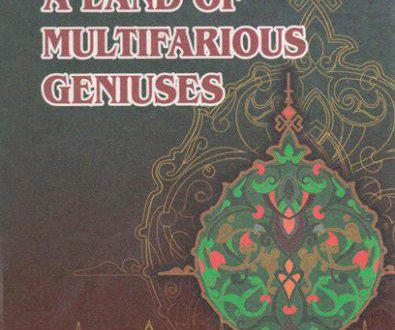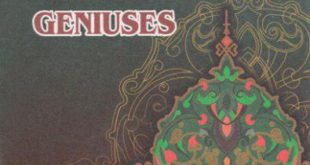One of the most ancient lands of our country is Kashkadarya oasis. Lots of famous and acknowledged thinkers and wise people have been educated in the cities of this oasis like Nasaf, Kesri, Kasbi, Fazli, Ghuzar, etc. Especially, the main city of the oasis Nasaf was the centre of science and education where a number of geniuses were educated and became world famous scientists under the penname of “an-Nasafi”. The following article tells us interesting facts about one of the leading figures in the world of Islamic sciences — Ja’far ibn Muhammad Abu-1-Abbas al-Mustaghfiri an-Nasafi.
Ja’far ibn Muhammad Abu-l-Abbas al-Mustaghfiri an-Nasafi was born in 961 AD and died in this city in 1041 AD. He received the primary education in his birthplace Nasaf and further education from the leading specialists in different cities of Maveraunnahr and Khorasan by visiting scientific and educational centres of such countries as Marv, Sarakhs, Nishapur, Bukhara and Samarkand. Thanks to his endeavours in seeking knowledge, al-Mustaghfiri became a famous scholar of the Islamic law, an expert in Hadiths, a historian and philologist of his time. He became a well-known lawyer in the Hanafian order, collected a great number of Hadiths and learned them by heart. A number of scholars of his time appreciated his scientific potential stressing that there was no scholar in Maveraunnahr in the second half of the 10th century and the first half of the 11th century that could be equalled al-Mustaghfiri.
At the age of twenty-seven, he began to deliver lectures for students at the central Jome’ mosque in Nasaf. At the last quarter ul his life, he worked as a Head Imam-Khatib of the city of Nasaf.
Although most of the historians who provided us with necessary materials about al-Mustaghfiri estimated and honoured him as “Sahib af-tasaniyf al-kasira” (the author of lots of precious books), at this very time we could find and comment only about ten books written by al-Mustaghfiri. One of his most important books is “Tarikhi Nasaf va-l-Kash” (The History of Nasaf and Kesh). Consisting of two big volumes this book was devoted to the description and characterization of different scholars who lived in Nasaf, Kesh and other cities of Maveraunnahr in the Middle Ages. In this book, the author divided the scholars and estimated figures in the science and education into eighty classes and described their characteristic features in accord with the principles he had chosen to study. It is a great pity that in accord with the information we have at our disposal, this book did not reach us. However, the scholars who lived after him used the essence of the book in their own creative activity effectively. One of the well-known and acknowledged authors who lived a hundred years later than him was Najmiddin Umar Abu Hafs an-Nasafi (1068-1142) who used the data given in al-Mustaghfiris’ book effectively in the creation and compilation of his book “Kitab al-qand fi zikri ulamai Samarqand” (A Sweet Book about the Learned People of Samarkand). Another author who used effectively the data given in al-Mustaghfiri’s book “Tarikhi Nasaf va-l-Kash” was Abu Sad Abdulkarim as-Sam’ani (1113-1167). In his big book “Al-Ansab” he mentions around fifty names of scholars of that time, and all the information concerning their activities were borrowed from it. The next most precious book of the author is “Tarikhi Samarqand” (The History of Samarkand) but it is a great pity that it did not reach us either.
During our researches, we have been convinced that at the time when al-Mustaghfiri lived understanding different problems of Islam and commenting on them was a matter of great importance. Therefore, the place and role of the scholars in disseminating and spreading the ideas of Islam and formation of Islamic way of thinking had an important meaning. Relying on these ideas, al-Mustaghfiri created some important books on different branches of the Islamic sciences. Among them we can mention the book titled as “Kitab fazail al- Qur’an” (A Book about the Peculiarities of Qur’an) which was appreciated as one of the earliest books devoted to one of these problems. Other books belonging to his pencil are as follows: “Dalail an-nubuwa” (Signs of Being a Prophet), “Kitab al-khutab an-nabaviya” (A Book about Prayers of the Prophet), “Kitab al-da’vat” (A Book of Calls), “Kitab ash-shamail” (A Book about the Appearance of the Prophet), etc.
There are also some more titles of books belonging to the pencil of al-Mustaghfiri such as “Kitab al-manamat” (A Book about Dreams), “Kitab ma’rifat as-Sahaba” (A Book about Sahabas) and one more book dealing with the problems of pure poetry “Kitab ash-she’r va-sh-shuara” (A Book about Poetry and Poets). Some of these books have reached us but it is a great pity that some of them did not. It is not far from reality that some copies or samples of these precious books are being preserved in the leading libraries of the world (perhaps in Germany, Turkey, Iran, Egypt, Syria and England). Perhaps some copies of these books are being kept in the personal libraries of our countrymen. It would be useful to find and search them and spread them over the wide range of our people. We hope that due to the enormous work carried out by our scholars, our people will be able to understand the essence of the scientific legacy of one of the greatest ancestors Ja’far ibn Muhammad Abu-l-Abbas al-Mustaghfiri an-Nasafi.
 Imom Buxoriy xalqaro ilmiy-tadqiqot markazi bukhari.uz
Imom Buxoriy xalqaro ilmiy-tadqiqot markazi bukhari.uz




